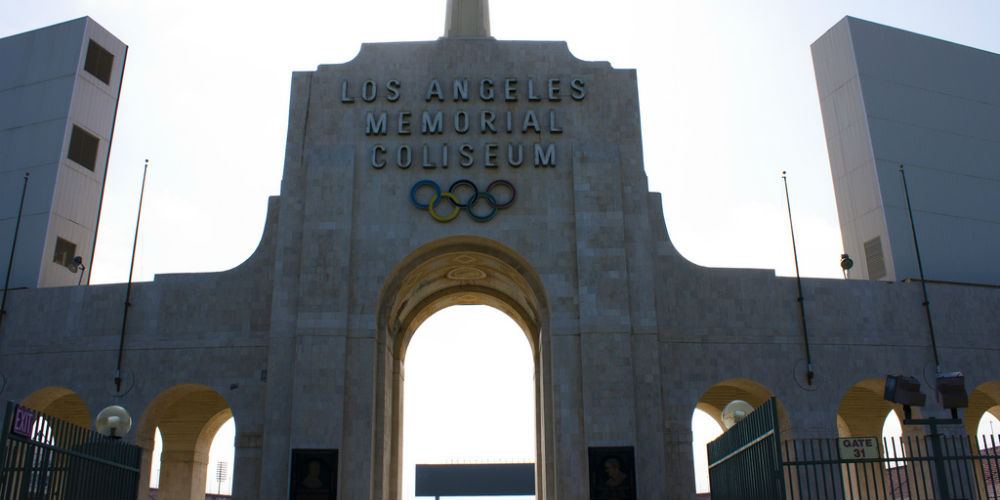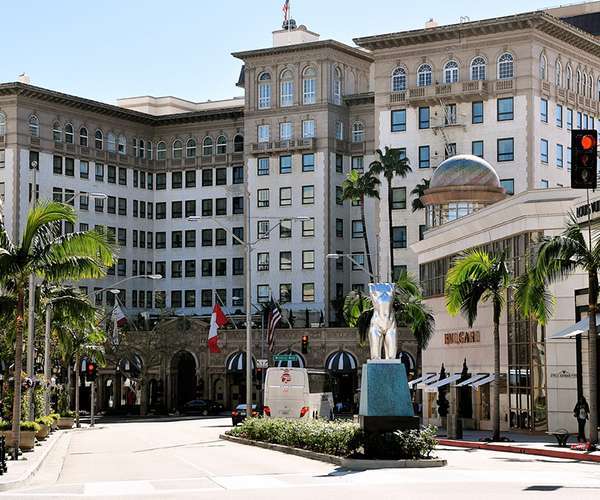With the 2018 FIFA World Cup a couple months behind us, it's time to look towards the future to the most recently awarded World Cup and its ...

The Olympic Games date back to 776 BC starting in Ancient Greece. These games continue to be the ultimate competition of sport among countries all over the globe. They are the pinnacle of sport and athletic ability and require huge stadiums that are be able to hold the enormous crowds, athletic events and opening and closing ceremonies. Because the traditional Summer Olympic format has been held every four years since 1896, it has seen some spectacular stadiums. They are some of the biggest stadiums ever built with capacities reaching more than 100,000.
5. Los Angeles Coliseum
One of the greatest athletic venues in American sports history, the LA Coliseum has also been the only facility to ever host the Summer Olympic Games twice. When the Coliseum opened in 1923 it was dedicated to all U.S. Veterans of World War I and was primarily used for football games. A few years later, when the U.S. was picked to host the Olympics in 1932, the stadium was renovated to add more than 25,000 seats to reach a capacity of 101,500. When America was again chosen to play host in 1984, the Coliseum was once again used as the primary venue for the ceremonies and track and field events. The LA Coliseum is synonymous with the Olympics as the entrance is fitted with the Olympic rings logo and The Olympic Torch.
 © Fido
© Fido
4. Melbourne Cricket Ground
Originally opened in 1853 as the home grounds for the Melbourne Cricket Club, the stadium initially had a capacity of around just 8,000. As time went on, the wooden stands were replaced and the stadium grew in size and capacity. When Australia hosted the 1956 Olympics, the stadium was renovated and expanded to a capacity of 103,000. Also known as the MCG, the stadium has been updated and still hosts sporting events, specifically rugby and cricket.
3. Grand Arena of the Central Lenin Stadium
Built during the 1950s under rule of the Soviet Union, the Grand Arena was used as a symbol of strength for the Soviets during the Cold War. The Grand Arena could hold around 103,000 people and hosted the opening and closing ceremonies. The 1980 Olympics were held during The Cold War, a time of political tension between many countries, but specifically between the United States and the Soviet Union. As a result, the U.S. boycotted the 1980 Summer Olympics along with 65 other countries. Even with the absence of many countries, the games went on and the Grand Arena was used as the main venue.
2. Olympic Stadium
Similar to the Grand Arena in Moscow in that the Olympic Stadium in Berlin was designed specifically to show the almighty strength and power of the Nazi Party. With construction taking two years between 1934 and 1936, Olympic Stadium was a state-of-the-art complex consisting of multiple fields and buildings and an amphitheater with a capacity of 25,000. Olympic Stadium could hold 110,000 spectators and even had an area designated for Hitler and other Nazis during the Olympic Games.
 © Roger W.
© Roger W.
1. Stadium Australia
Built as the centerpiece of the 2000 Olympics in Australia, Stadium Australia, or ANZ Stadium as its known, is the biggest stadium to ever host the Olympics. The closing ceremony of the 2000 Olympics set the record for highest attended event with 114,714 people viewing the ceremony. Although the stadium has since been reconfigured and less seats are available, Stadium Australia is one of the top venues around the world and hosts some of the biggest sporting events and concerts in Australia.
 © Elver
© Elver
— — —
Cover photo © traveljunction


Located near the heart of Cartagena's old city, this hotel provides local, Spanish hospitality with French luxury.


Set beachfront, with a picturesque desert backdrop, resides this beautiful property, a sure-fire hit for any vacation.


Nestled in the heart of Beverly Hills, this luxurious hotel's history rivals thar of any hotel in the world, and the famous Rodeo Drive is a short walk away.


Ideal for families, singles and couples alike, this resort embodies the Jamaican culture, with fun activities around every corner.


With one week in Ireland, you can pack in almost anything you set your sights towards. The country is sprawling with gorgeous green fields and ...











